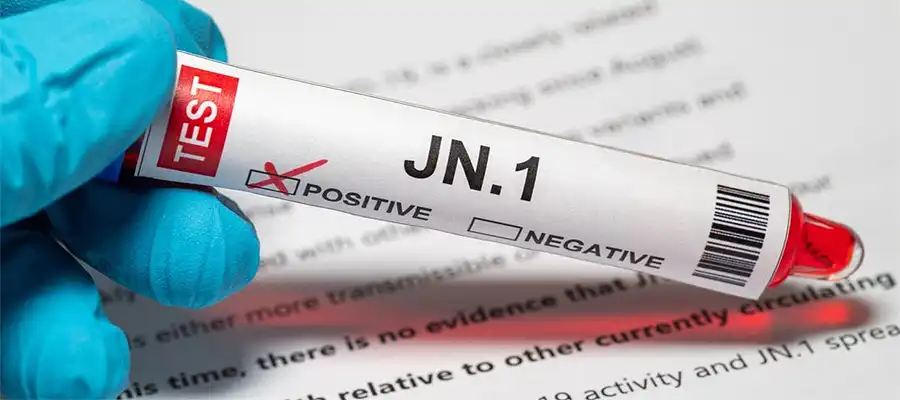Parts of India are reporting an increase in active COVID-19 cases, with a recent report of 250 active cases. The increase has been linked to a new variant called JN.1. JN.1 has been discovered in several states and is a sub-lineage of Omicron. Currently, JN.1 is being monitored by health officials due to the possibility verging on its transmission rate and associated symptoms.
Kerala is the epicenter of the outbreak, with 182 reported cases. Other state health authorities have also released other advisories regarding the use of face masks.
What is the JN.1 variant?
It is yet another strain of the Omicron variant of the COVID-19 virus. Like the original, JN.1 is also reproduction-prone; however, this time it seems to be with great ease due to a new mutation in the virus's spike protein, which is the component of the virus responsible for attaching to and entering human cells. This change might affect the way the virus propagates and engages with the immune system. Because of this, scientists have to keep a watchful eye on JN.1 to figure out if it spreads more easily than before or incurs different symptoms than Omicron.
What symptoms are associated with the JN.1 variant?
The signs of JN.1 are believed to be the same as for Omicron subvariants. The pattern may, however, vary for every individual.
- Fever: Most of the time, modest and passes quickly
- Cough: It may be dry, or accompanied by a small but noteworthy sputum
- Sore throat: Often the first sign
- Runny or stuffy nose: A symptom similar to that of the common cold.
- Headache: It usually ranges between mild and moderate intensity.
- Fatigue: The feeling of tiredness is often positioned at the general level of the spectrum of energy.
- Body or muscle aches: Rather optional; however, some people do experience it.
- Gastrointestinal concerns, such as diarrhea and nausea, were also more common among other complaints.
This test is considered the most reliable and is the most widely used test. It can be performed by collecting swabs from the nose or throat, as it can check for the virus even during the pre-infection stage.
Do we know if the JN.1 variant has higher transmissibility and severe illness?
There is some evidence that states that JN.1 could spread faster than other previous variants, and this is most likely because of its unique mutation. Because of this, it might lead to more infections in less time. However, severe cases reported with JN.1 are still rare, and most of them seem to be infections.
People who become infected with the JN.1 variant generally get well in about 5 to 7 days, especially in the case of mild infections, due to the body fighting off the infection. Nonetheless, the length of time needed to recuperate is also influenced by the person’s age, pre-existing medical conditions, and the stage at which the treatment commences.
Diagnosis tests for COVID-19 JN.1 variant
RT-PCR (Reverse Transcription Polymerase Chain Reaction)
This test is the most reliable and common. It includes a swab of the lining of the nose or throat, and it is capable of identifying the virus at very early stages of infection.
Rapid Antigen Tests (RATs)
These tests are often used to screen for COVID-19 in busy places, and results come out within 15 to 30 minutes. The downside is that they do not often pick up early or asymptomatic infections. Therefore, a negative RAT result would need to be confirmed with an RT-PCR done.
Tests for diagnosing the COVID-19 JN.1 variant RT-PCR (Reverse Transcription Polymerase Chain Reaction)
COVID-19 JN.1 treatment
For mild cases, caring for oneself and drinking fluids is usually sufficient. Please discuss with a physician before taking any fever or pain medications. Steam inhalation,
